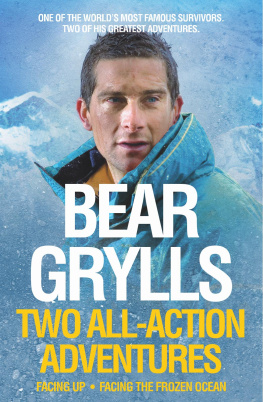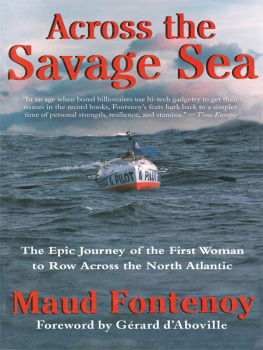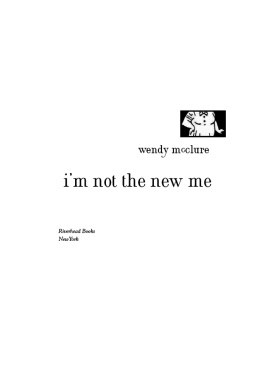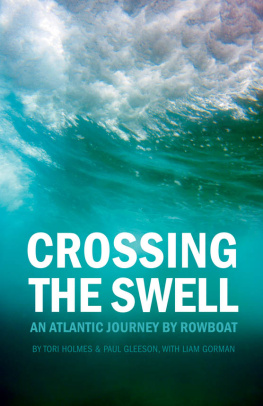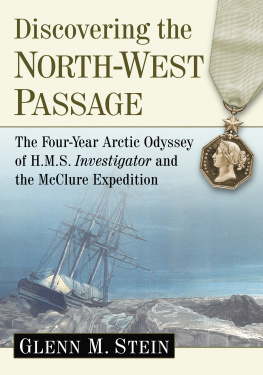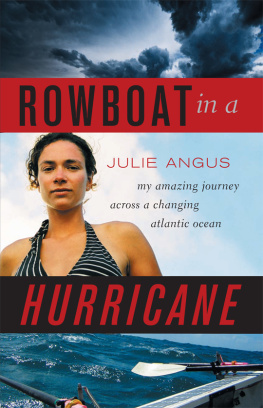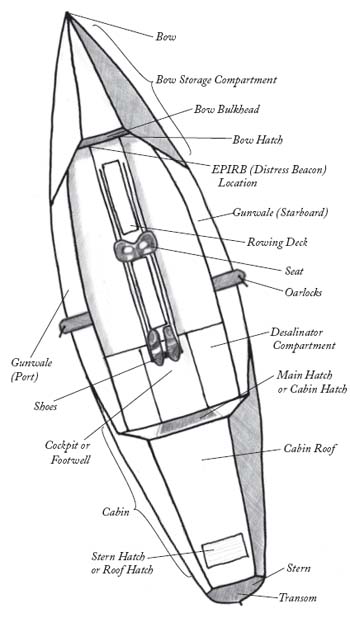June 14, 1998
latitude north 35:52, longitude west 75:34
the Outer Banks of North Carolina
IN THE END, I KNOW I ROWED ACROSS THE ATLANTIC to find my heart, but in the beginning, I wasnt aware that it was missing. In January 1998, I asked my uncle, If I write a book about my explorations, should I write it as a comedy, a history, a tragedy, or a romance? With a twinkle in his eye, he said, A romanceit must be a romance. He explained that I was too young to write my life as a history: Who wants to read the history of half a life? Tragedy, he explained, was boring. Anyone over the age of thirty can write his or her life as a tear-soaked muddle. There is no challenge in that, my uncle counseled. Comedies are fine, but the greatest stories in life are about romance.
I didnt doubt that my uncle spoke the truth, but there was a problem. I had no experience with romance. None. I was thirty-five. Tragedy, I could write. Comedy, I could write. Even history, I could write. Romance was out of my depth. If I had charted a map of my life, I would have placed romance on the far side of an unexplored ocean, where ships would drop off the edge of the world and the legend at that edge of the map would read, Here there be sea monsters.
I considered myself a thoroughly modern woman. As a graduate of Smith College, I embraced the notion that our culture had evolved to the point where a woman might openly take on the role of an Odysseus. Like the epic hero in Homers Odyssey , women could be clever. We could set out on epic quests of our own choosing. Like men, we could be independent and internally motivated. Women could be tested and not found wanting in trials of courage, resourcefulness, endurance, strength, and even solitude. What I did not know was that exploring these vaguely masculine qualities would not be enough for me. I am, after all, a woman. It was not until my boat dropped off the edge of the world, into the realm of sea monsters, that I began to understand some of what I had been missing.
LETS FACE IT: NORMAL, well-adjusted women dont row alone across oceans. According to the records of the Ocean Rowing Society, in London, England, no woman had ever rowed solo across an ocean, but I didnt let this worry me. About midday on Sunday, June 14, 1998, I drove my old gray pickup truck towing a rowboat to the Oregon Inlet Fishing Center, a few miles south of the sleepy beach town of Nags Head, North Carolina.
Id already made the obligatory stop at the Coast Guard station. The officer in charge had done his best to talk me out of making the trip. More men had walked on the moon than had successfully rowed alone across the North Atlantic. Nonetheless, I stood squarely behind a very simple legal precedent: men had been allowed to leave the coast of the United States in rowboats bound for Europe. They couldnt very well stop me just because I was a woman. Once my boat passed the Coast Guard inspection, I was free to go.
I backed my twenty-three-foot rowboat down a ramp and launched the American Pearl . The boat was six feet wide at its widest point. The tallest part of the rear cabin sat four feet above the water-line. In the center of the vessel was a rowing deck about the size of the cargo bed in my Ford F-150. The rowing deck was open to the sky, but there was a watertight cabin at the back of the boat. I would enter the cabin through a waterproof Plexiglas hatchway that was nineteen inches square. This window-sized door between the cabin and the rowing deck was the main hatch.
To call the stern compartment a cabin exaggerates the space. The watertight sleeping area was slightly larger than a double-wide coffin. I couldnt sit erect without hitting my head on the ceiling, but I could lie down with a few inches to spare. In the floor that served as my bed there were eight small hatches. These opened into little storage compartments that contained my electrical equipment, tools, clothing, and other gear. Between the cabin and the rowing deck was a cockpit that was two feet wide and sixteen inches deep. This little footwell would serve as a kitchen, bathroom, navigational center, and weather station. There were two small benches on either side of the cockpit. One bench housed the desalination system that would turn salt water into drinking water. In the other, I stored my stove and cooking gear when they were not in use. Like my rowing station, the cockpit was uncovered and open to the weather.
I knew every inch of the boat, which Id built with the help of friends in the bay of an old warehouse in Louisville, Kentucky. Wed conjured the vessel out of twenty-three sheets of marine plywood following a British design by Philip Morrison. The rowing deck was twelve inches above the surface of the water, and the tops of the gunwales, or sides of the boat, were two and a half feet above the waterline. If the boat hadnt been small enough to ride up and down on ocean swells like a cork, any wave bigger than two and a half feet would have washed over the sides. Water that washed in over the gunwales ran out through four scuppers, or drain holes, at the level of the rowing deck.
The boat was designed like an old egg crate. Nine mahogany ribs ran from side to side. Eight of the ribs were divided by bow-to-stern stringers, one on each side of the centerline. These ribs and stringers separated the inner hull into a checkerboard of watertight compartments. We glued the sections with epoxy, reinforced the seams with fiberglass, and filled the voids with urethane foam. On the salary of a city employee, I couldnt afford to build a lighter, sleeker craft out of carbon fiber or Kevlar.
Of the eleven compartments under the rowing deck, seven stored food, two housed my sea anchors, and two larger compartments in the center of the boat next to the keel held my ballast tanks. For ballast, I would use seawater. Each of the two ballast tanks held just over twenty-five gallons. In rough weather, I would fill the tanks, placing four hundred pounds of water weight next to the keel at the bottom of the boat. This weight would lower the vertical center of gravity, making it more difficult for the boat to flip upside down. If the boat did flip, this ballast would help it to self-right. No one had ever rowed across the North Atlantic without capsizing.






